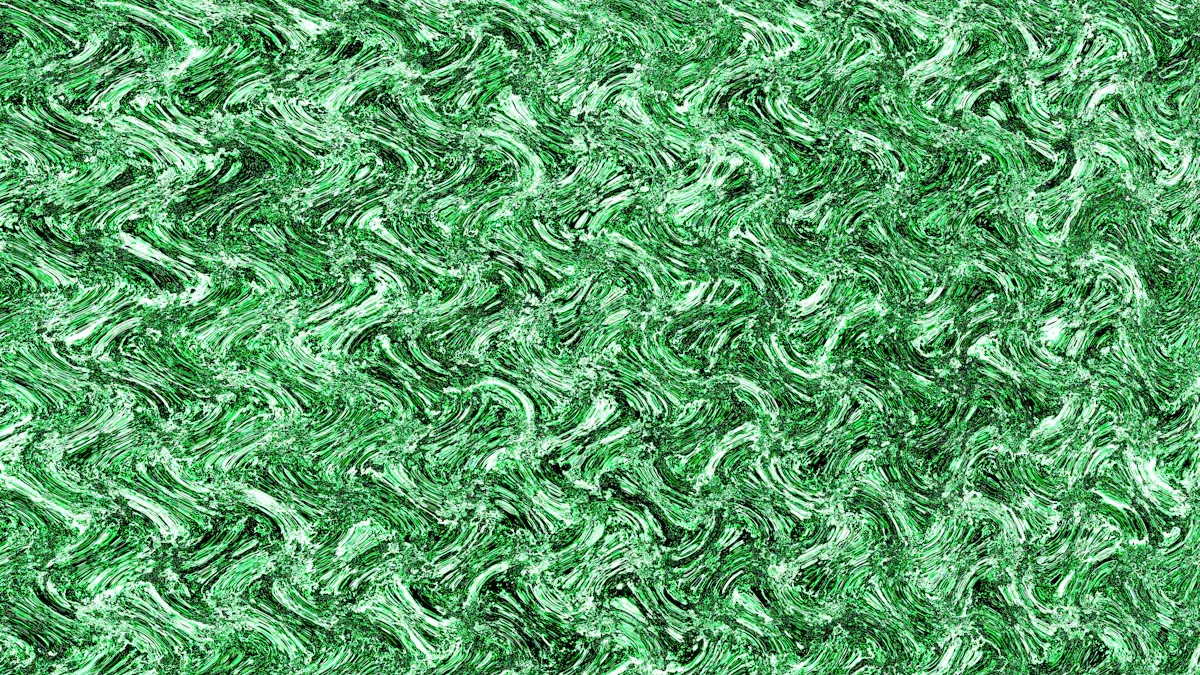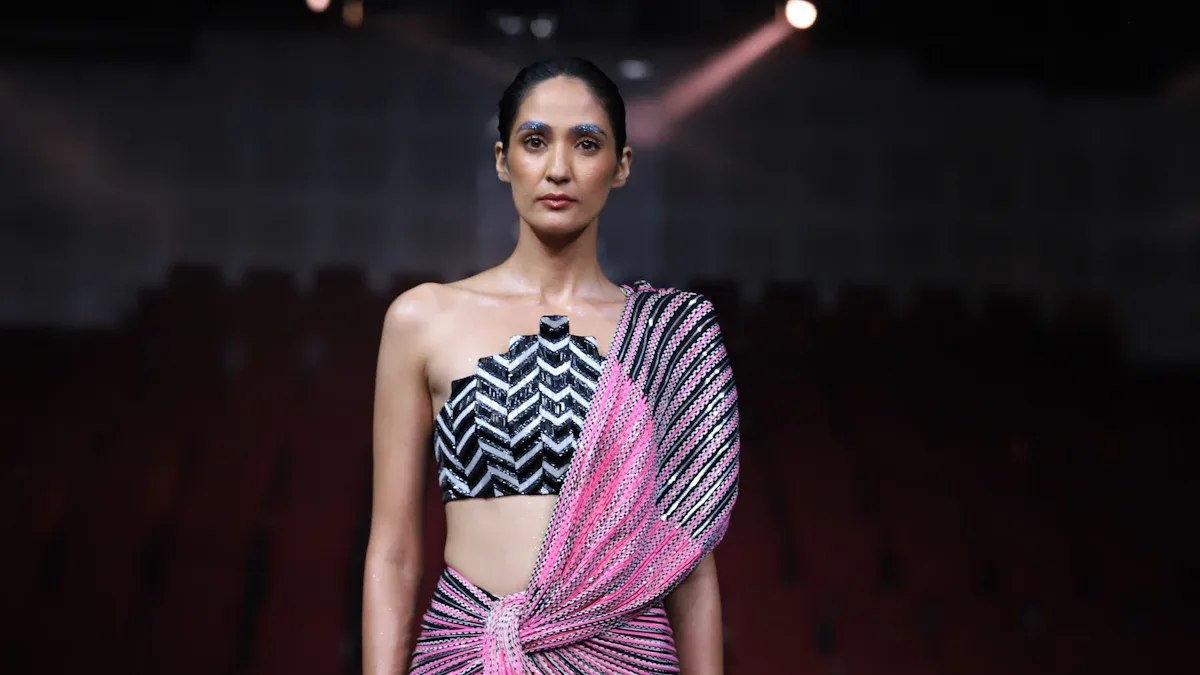
Generative AI is a powerful new ally for the sustainable fashion movement. The fashion industry generates approximately 92 million tonnes of textile waste annually. This massive scale of fashion production demands innovative solutions. Generative AI helps fashion design teams tackle this challenge directly. AI enables significant waste reduction, optimizes sustainable materials, and helps build circular economy models for fashion.
The use of generative AI in fashion is a game-changer for sustainability. AI offers a new generation of design tools. This AI helps designers create better fashion with less environmental impact. AI is a key technology for the future of fashion design.
Reducing Waste with Generative AI
The fashion industry's journey toward sustainability requires a direct attack on its biggest problem: waste. Generative AI offers powerful strategies to minimize waste at critical stages of production. These tools change how clothes are designed and sold. They create a more efficient and responsible fashion ecosystem.
Virtual Prototyping
The traditional fashion design process creates enormous waste. Designers often produce multiple physical samples for a single garment. Each sample uses fabric, water, and energy. This cycle repeats for every small adjustment. The result is a mountain of discarded prototypes and a significant environmental footprint.
Generative AI transforms this outdated model with virtual prototyping. Advanced software allows designers to create photorealistic 3D digital garments. They can see how fabric drapes, moves, and fits on a virtual model. This digital process lets them refine a design endlessly without using a single thread of physical material. This new generation of tools can reduce the need for physical samples by up to 60%. This directly cuts down on material, water, and energy consumption. It also eliminates the carbon emissions from shipping samples around the globe.
“AI is not just accelerating the design process – it’s helping us make better, more sustainable choices from the very beginning.” - Sarah Thompson, Head of Sustainable Design at Nike.
This approach to design saves resources and accelerates development. A McKinsey report shows that AI-powered design tools can reduce product development time by up to 50%. This efficiency helps brands bring sustainable fashion to market faster. The use of generative AI in fashion makes the entire design phase smarter and cleaner.
AI-Powered Demand Forecasting
Overproduction is a core driver of waste in the fashion industry. Brands often guess what consumers will want to buy. These guesses are frequently wrong. About 25% of all new garments are never sold. This unsold inventory creates a huge problem. Companies may burn or send these clothes to landfills. This practice wastes all the resources used in production. A single cotton shirt requires over 3,000 liters of water to make. Unsold clothing made from synthetic textile can sit in landfills for 200 years, releasing harmful chemicals.
AI provides a powerful solution through accurate demand forecasting. AI systems analyze massive amounts of data to predict what will sell. This is a key part of trend analysis and forecasting. The AI looks at many data points, including:
- Past sales history by style, color, and size
- Social media trends and influencer posts
- Website search data and click patterns
- Regional weather forecasts
- Competitor pricing and promotions
This deep analysis gives brands a much clearer picture of consumer demand. This data also helps create better personalized product recommendations for shoppers. Brands using AI for forecasting have seen an 85% improvement in accuracy. This precision allows companies to produce only what is needed, drastically cutting overproduction. H&M Group, for example, used AI technology to cut its overproduction by 30% in a single year. Generative AI helps fashion brands make smarter inventory decisions. This shift is essential for long-term sustainability. The use of generative AI is a critical step toward ending the cycle of waste in fashion.
Sustainable Materials and Textile Design Innovation

Generative AI moves beyond reducing waste. It actively helps create the next generation of sustainable materials and designs. This technology gives designers new creative powers. They can invent novel fabrics and build products for a circular economy. This marks a major step forward in sustainable fashion.
AI-Powered Design Generation
The creative process in fashion is getting a powerful upgrade from generative AI. This technology accelerates design and opens doors to new ideas for materials and patterns.
AI algorithms analyze huge datasets of images, textures, and cultural styles. This analysis allows for rapid pattern and print generation. A designer can create hundreds of unique options in hours. This process used to take weeks of manual work. AI also helps with color palette development. It can suggest harmonious and trending color combinations based on data. This makes the design generation process faster and more accessible for smaller brands. Industry reports predict that AI-driven design tools will influence 40% of the textile market by 2026.
The innovation goes deeper than surface patterns. Researchers at MIT use AI to generate new fabric weave structures. The AI learns from existing textile databases to invent new physical weaves. Automated looms can then produce these AI-designed fabrics. This is a key part of textile design innovation. Furthermore, AI speeds up sustainable textile development. For example, chatbots like Materiom AI help researchers develop new bio-based materials. The AI provides information on ingredients and predicts performance, reducing the need for wasteful physical tests.
AI is not just a tool for making things faster. It is a partner in invention. It helps us imagine and create materials that are both beautiful and kind to our planet.
AI also minimizes waste during the cutting process. Advanced algorithms analyze the most efficient way to lay out pattern pieces on a roll of fabric. This is like solving a complex puzzle to ensure no space is wasted. This optimization can significantly reduce fabric off-cuts. Startups using this technology have cut their initial material waste by up to 40%. This saves money and conserves precious resources.
Designing for Circularity
A truly sustainable fashion industry requires a circular model. This means clothes are designed to be reused, repaired, or recycled, never thrown away. Generative AI provides the intelligence needed to design products for this lifecycle. It helps designers think about a garment's end from its very beginning.
A major goal in circular fashion is creating zero-waste patterns. These patterns use 100% of the fabric, leaving no scraps behind. Historically, these designs were difficult to scale across different sizes and styles. AI solves this problem.
- Platforms like SXD use AI to create "living patterns."
- These patterns can be instantly redesigned for any size or fabric without creating waste.
- This technology can reduce fabric consumption by up to 46%, a huge leap for sustainability.
Generative AI also helps designers create garments that are easy to take apart. This is called designing for disassembly. If a piece of clothing is easy to deconstruct, its materials are easier to recycle. For example, AI can help integrate smart materials like Resortecs' heat-dissolvable threads. These threads allow a garment to be quickly disassembled with heat. AI tools can simulate this process, ensuring the design is efficient. This also supports modular design, where individual parts of a garment can be replaced or upgraded.
Finally, generative AI is the brain behind new circular economy business models. AI-enhanced Product Lifecycle Management (PLM) systems track a product from raw material to its final return.
- Tools like CircKit Design use AI to recommend the best sustainable materials.
- AI systems provide data on a material's durability and recyclability.
- This information helps designers make smart choices that support a circular fashion future.
By integrating AI into the design process, brands can create a closed-loop system. This system ensures that the fashion of tomorrow does not become the waste of the day after.
Real-World Applications of Generative AI in Fashion

The theory behind generative AI is impressive. Its real-world impact is even more exciting. Leading fashion companies and innovative startups are already using this technology. They are proving that AI is a practical tool for building a better fashion industry. These applications show how generative AI in fashion creates tangible results.
Pioneering Brands and Startups
Many brands now use AI to advance their sustainability goals. This new generation of tools helps them reduce waste and improve efficiency. The use of generative AI is changing how the fashion business operates.
- Stitch Fix uses powerful AI algorithms for its personalized product recommendations. This AI helps the company understand customer preferences deeply. As a result, Stitch Fix cut its return rates by 30%, which means less shipping and less waste.
- H&M Group applies AI to its demand forecasting models. The AI analyzes sales data and trends to predict what customers will buy. This smart approach helps the company avoid making too many clothes.
- Stella McCartney works with partners that use AI to design enzymes for textile recycling. This innovative use of AI supports the brand's commitment to circular fashion.
These companies show that AI provides a clear path to better business and environmental outcomes. The technology helps them make smarter decisions at every step.
Essential AI Tools for Designers
Designers do not need to be data scientists to use AI. Many accessible tools now bring the power of generative AI to the creative process. These tools help with everything from initial ideas to final production. This makes the fashion design process more efficient.
| Tool Category | Description |
|---|---|
| Concept Ideation | Platforms like Midjourney and DALL-E use generative AI to create images from text prompts. A designer can type "a floral dress design in the style of art nouveau" and get instant visual concepts. This speeds up brainstorming for a new fashion collection. |
| Pattern Optimization | Specialized AI software analyzes how to cut pattern pieces from a roll of fabric. The AI arranges the pieces to minimize leftover material. This technical design tool directly reduces textile waste before a single garment is sewn. |
These AI tools empower designers to work faster and more sustainably. They make advanced technology a part of the everyday fashion design workflow.
Navigating Challenges and the Human Role
The rise of generative AI in fashion brings great promise. However, brands must navigate important challenges to use this technology responsibly. The goal is not to replace human designers but to create a powerful partnership. This collaboration is key for the future of fashion design.
Ethical and Technical Hurdles
Adopting generative AI in fashion is not a simple process. It comes with several ethical and technical hurdles. Brands must address these issues to build trust and ensure fairness. The use of AI requires careful planning.
Key challenges for the fashion industry include:
- Data Privacy: AI systems need large amounts of customer data. This creates concerns about how companies collect and protect private information.
- Potential for Bias: An AI learns from the data it receives. If the data shows past biases in fashion, the AI may create skewed designs that lack diversity.
- High Costs: Implementing AI technology requires a significant financial investment. This can be a major barrier for smaller fashion brands.
The increasing use of AI-generated designs also raises questions about intellectual property. It is important for the fashion industry to establish clear rules for this new generation of tools. This ensures that the use of AI is both ethical and legal.
Human Creativity and AI Collaboration
Generative AI is not a replacement for human creativity. Instead, it is a powerful partner in the design process. The best results happen when human designers and AI work together. This partnership enhances the entire fashion design workflow.
AI excels at technical tasks. An AI can quickly generate patterns, test virtual prototypes, and optimize textile layouts. This speed and precision free up human designers. They can dedicate more time to the creative parts of their job, like conceptual development and storytelling. This human-AI collaboration leads to better design outcomes.
The role of the designer evolves with generative AI. Designers become curators and directors. They guide the AI, provide critical feedback, and make the final creative decisions. This ensures the final fashion product reflects the brand's vision and values. This synergy between human intuition and AI's analytical power is essential for innovation in sustainability and fashion.
Generative AI is reshaping the fashion industry. This powerful AI helps reduce waste and enables circular fashion. The technology is a tool, not a replacement. The future of fashion needs human oversight to guide the AI. This collaboration between designers and advanced AI is crucial. This new generation of AI will build a truly sustainable fashion future. Generative AI and multi-modal AI will transform fashion. The AI provides data, but human creativity makes the final fashion choices.
Generative AI is key for fashion sustainability. The use of AI is the future of fashion.
FAQ
How does AI help sustainable fashion?
AI helps the fashion industry reduce waste. The AI analyzes data to predict sales, preventing overproduction. This AI also creates digital samples, which saves materials. This use of AI makes fashion more eco-friendly.
Will AI replace fashion designers?
No, AI will not replace fashion designers. Instead, AI acts as a powerful tool. Designers use AI to handle technical tasks. This allows designers to focus on creativity. The AI and the designer work together to improve the fashion design process.
Is AI technology only for big fashion brands?
While large companies use complex AI systems, many AI tools are accessible to everyone. Smaller fashion brands and independent designers can use affordable AI software for tasks like concept creation and pattern optimization. This AI helps level the playing field.
What is an example of AI in fashion design?
An AI can generate hundreds of unique textile patterns from a simple text description. A designer can ask the AI for specific styles or colors. This AI provides many options quickly. This use of AI speeds up the creative process in fashion.
See Also
Revolutionary AI Fashion Solutions for a Sustainable and Greener Planet
AI's Role in Managing Viral Trends Within the Fast Fashion Industry
Optimizing Production: AI-Driven Scheduling for Future Fashion Demand in 2025
AI-Powered Dynamic Safety Stock: A 2025 Solution for Fashion Retail
Streamlining Fashion Returns: Leveraging Smarter AI for Immediate Efficiency